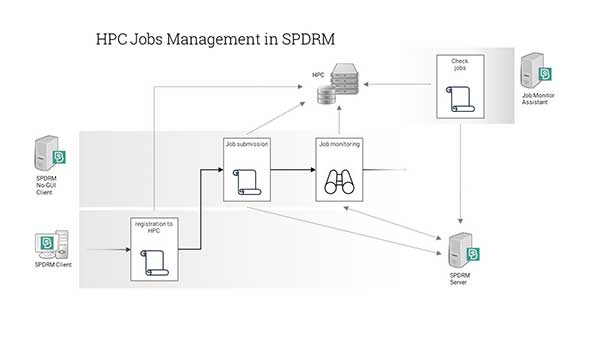
HPC jobs management in SPDRM. Image courtesy of BETA CAE Systems
{if embed:cat_name != 'Downloads'}News
{if embed:cat_name != 'Downloads'}Latest Resources


Latest Products
August 7, 2020
SPDRM v1.4.0 from BETA CAE Systems is now available, with numerous important enhancements in the back end and in the SPDRM client.
This version introduces a new interface to streamline the submission and monitoring of HPC jobs. With the new functionality, clients are getting notified automatically for job status changes of interest directly through the SPDRM server, minimizing the network traffic with the HPC server and eliminating the need for keeping the SPDRM client open while the job is running.
Moreover, the BETA Apps Launcher is introduced, as a cluster of no-GUI host servers (i.e., lightweight HTTPS servers), for the execution of time-consuming and resource-intensive tasks (e.g., CAD files translation, batch meshing, etc.) on dedicated servers.
In addition, SPDRM v1.4.0 supports the scheduled execution of processes or SPDRM scripts through the new “Scheduled Jobs” utility. Job recursion can also be requested, facilitating the execution of tasks like for instance, the download and translation of CAD updates.
The RIOC external service (i.e., remote lightweight HTTPS server) is introduced to handle file I/O commands on SPDRM Vault Replication (i.e., single-server multi-site) solution, related to remote requests made by the SPDRM Client, or ANSA/META applications. The objective of this development is to bypass all SSH connections used in previous versions of SPDRM multi-site solution, by calling a REST command on the remote HTTPS server, which will perform (locally) all actions called from the SPDRM Server. This new feature makes the SPDRM single-server multi-site solution more robust, secure and efficient.
Finally, this version introduces a new REST API, to facilitate the extraction of SPDRM information through 3rd-party applications. In this first version, DM Schema, data object and process related information can be extracted.
Sources: Press materials received from the company and additional information gleaned from the company’s website.
Subscribe to our FREE magazine, FREE email newsletters or both!
About the Author
DE’s editors contribute news and new product announcements to Digital Engineering.
Press releases may be sent to them via [email protected].
Related Topics
All topics



